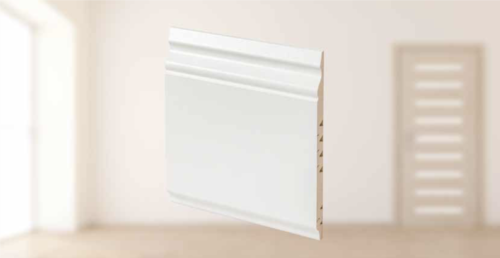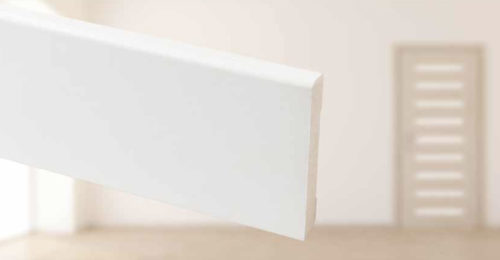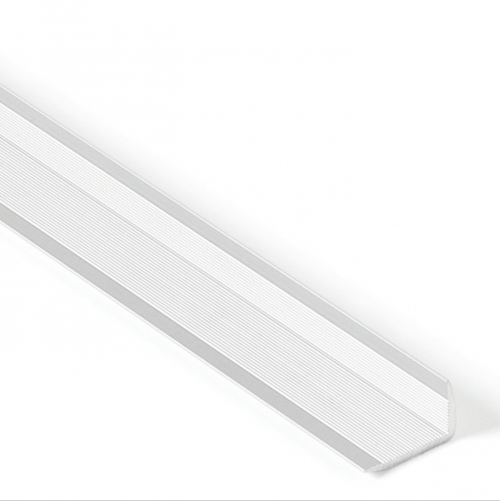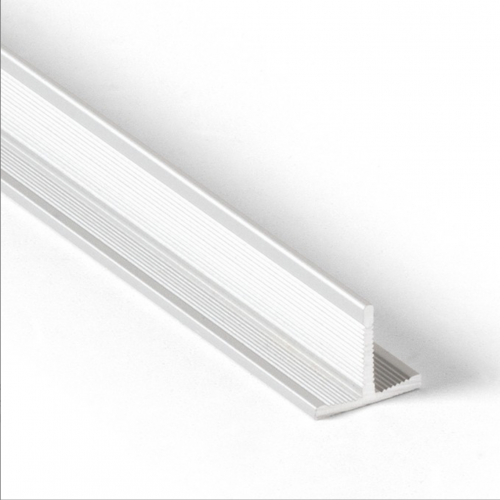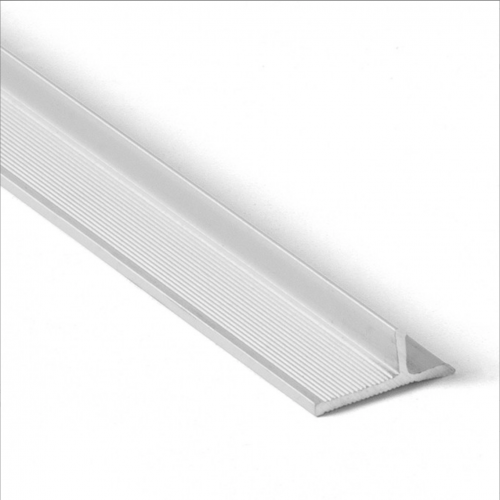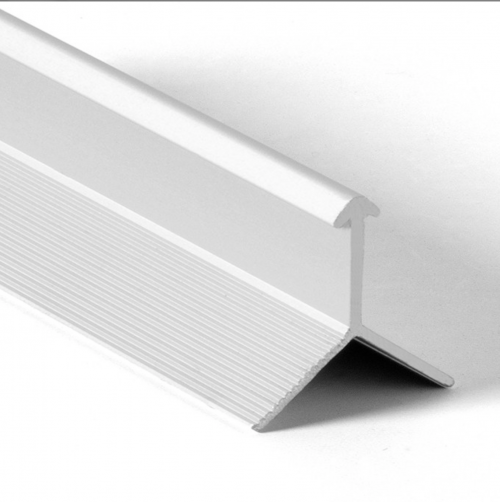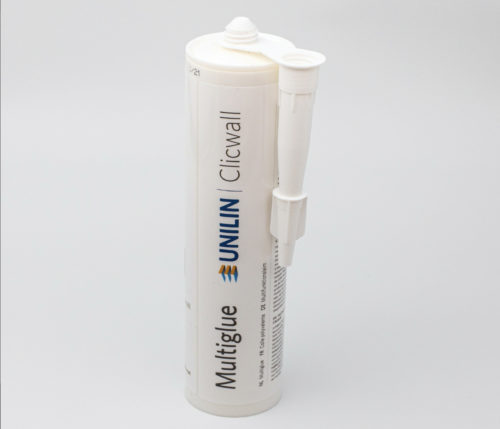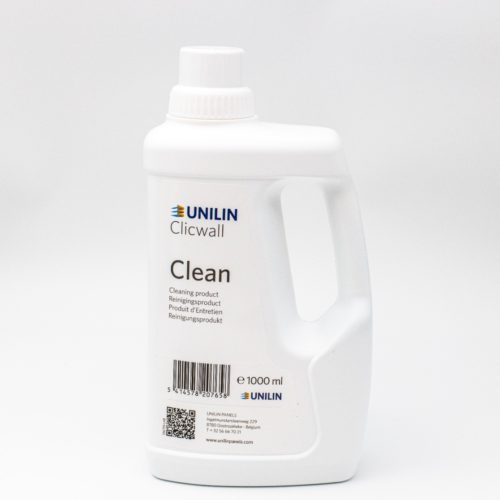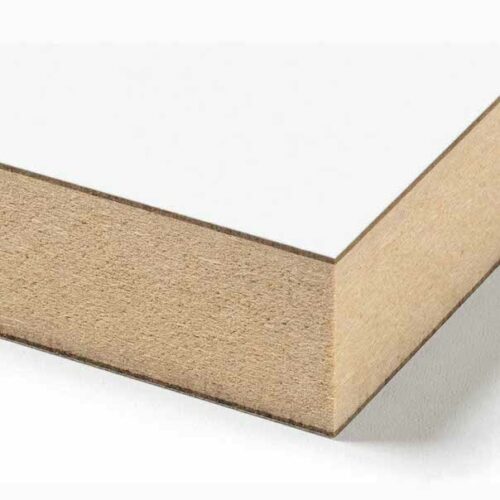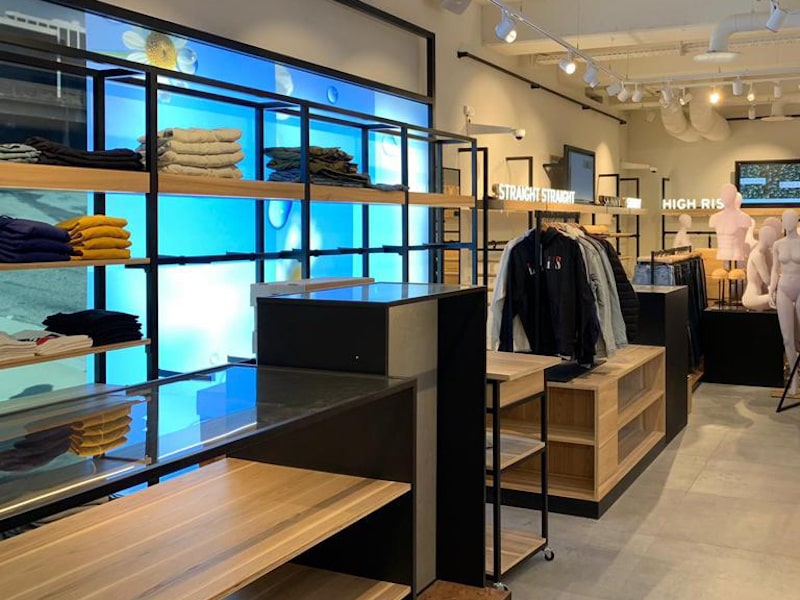MDF
Due to their homogeneous structure, MDF (medium-density fiberboard) panels are easy to work with and versatile in application. They are paintable and can be covered with various surfaces. For example, they are very often used by carpenters and joiners, especially for interior finishing.

Features
MDF panels from Broszeit are available both as a standard version and in flame-retardant, moisture-resistant and low-formaldehyde or formaldehyde-free variants.
Areas of application
Interior design / interior finishing, furniture production, substrate for HPL or veneer
-
Skirting boards for finishing off Clicwall, ready to paint
Ready-to-paint skirting boards for finishing off Clicwall. The skirting board is used to cover the expansion joint between the floor and the wall. A high-quality white foil finish in color quality, suitable for an excellent finish that saves time and money. Dimensions / thickness: 2400 × 160 × 16 mm -
Aluminum T-profile for finishing of Clicwall
Clicwall Alu Profile T is an impact and moisture resistant aluminum profile designed to finish separation walls and wall linings decorated with Clicwall. It is mainly used to cover vertical dilatation joints in long walls or horizontal dilatation joints in high walls. -
suitable for interior finishing and furniture making
Melamine faced non-structural MDF board for interior finishing and furniture production for intensively used surfaces. This product meets the surface specifications of a carrier board glued on 2 sides with HPL. The melamine coated high performance board can be used in dry service class 1 environments and is made from 100% recycled wood: 100% pre-consumer wood that comes from residual streams from the wood industry or thinning wood from sustainable forest management and road maintenance. -
Melamine faced, moisture-resistant, non-structural MDF for interior and furniture, suitable for heavy-duty surfaces thanks to the product’s multi-layer structure
This product satisfies the surface specifications of a base board, bonded on two sides with a HPL. The melamine faced, high-performance board can be used in humid conditions, service class 2 and is made from 100% recovered wood – 100% pre-consumer wood from residual streams from the wood-processing industry or timber offcuts from sustainable forestry and verge maintenance.


Agency partner UNilin
Pioneer of the circular economy
UNILIN has been a pioneer of the circular economy since the 160s. The Union des Lins at the time used shives — a residual product from the flax industry — as the basic base material for panels. To keep up with the growth over the years, UNILIN kept on searching for new, sustainable raw materials. Soon, residual material from the wood industry became the new basic base material.
INTELLIGENT COOPERATION
SUSTAINABLE TRANSPORT
